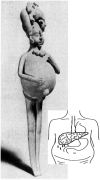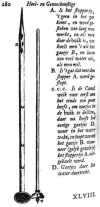Historical Aspects of Ascites and the Hepatorenal Syndrome
- PMID: 34745581
- PMCID: PMC8555459
- DOI: 10.1002/cld.1090
Historical Aspects of Ascites and the Hepatorenal Syndrome
Abstract
Content available: Author Interview and Audio Recording.
© 2021 by the American Association for the Study of Liver Diseases.
Figures













References
-
- Bryan CP. Chapter XXI. Diagnosis. The Papyrus Ebers [translated from German]. London: G. Bles; 1930.
-
- Kutumbiah P. Ancient Indian Medicine. Hyderabad, India: Orient Longman Private Ltd.; 1999.
-
- The Hebrew Bible . Alter R: Translation and Commentary. Vol. 1. Numbers 5:11‐21. New York: WW Norton and Company; 2019.
-
- Martinez‐Lavin M, Mansilla J, Pineda C, et al. Evidence of hypertrophic osteoarthropathy in human skeletal remains from pre‐Hispanic Mesoamerica. Ann Int Med 1994;120:238‐241. - PubMed
-
- Adams F [trans.]. The genuine works of Hippocrates. Translated from the Greek with a preliminary discourse and annotations. Vol. II. Aphorisms. Section VII. 55. London: The Sydenham Society of London; 1849:55.
Publication types
LinkOut - more resources
Full Text Sources

